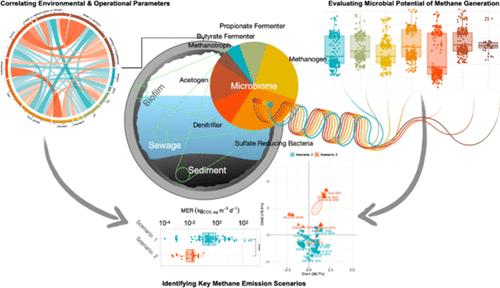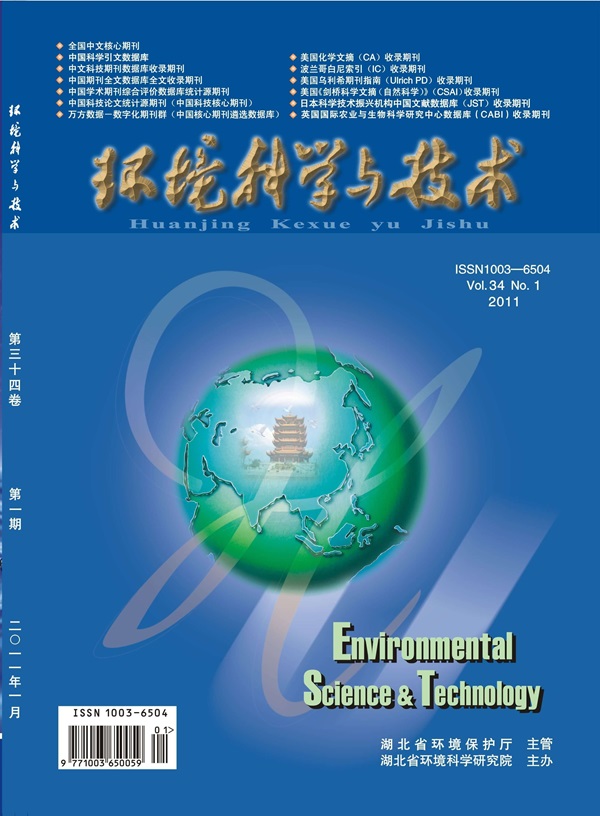Methanogenic Potential of Sewer Microbiomes and Its Implications for Methane Emission
IF 11.3
1区 环境科学与生态学
Q1 ENGINEERING, ENVIRONMENTAL
引用次数: 0
Abstract
The sewer system, despite being a significant source of methane emissions, has often been overlooked in current greenhouse gas inventories due to the limited availability of quantitative data. Direct monitoring in sewers can be expensive or biased due to access limitations and internal heterogeneity of sewer networks. Fortunately, since methane is almost exclusively biogenic in sewers, we demonstrate in this study that the methanogenic potential can be estimated using known sewer microbiome data. By combining data mining techniques and bioinformatics databases, we developed the first data-driven method to analyze methanogenic potentials using a data set containing 633 observations of 53 variables obtained from literature mining. The methanogenic potential in the sewer sediment was around 250–870% higher than that in the wet biofilm on the pipe and sewage water. Additionally, k-means clustering and principal component analysis linked higher methane emission rates (9.72 ± 51.3 kgCO2 eq m–3 d–1) with smaller pipe size, higher water level, and higher potentials of sulfate reduction in the wetted pipe biofilm. These findings exhibit the possibility of connecting microbiome data with biogenic greenhouse gases, further offering insights into new approaches for understanding greenhouse gas emissions from understudied sources.

下水道微生物群的产甲烷潜力及其对甲烷排放的影响
尽管下水道系统是甲烷排放的重要来源,但由于定量数据有限,在当前的温室气体清单中经常被忽视。由于下水道网络的出入限制和内部异质性,对下水道进行直接监测可能成本高昂或存在偏差。幸运的是,由于甲烷在下水道中几乎完全由生物产生,我们在本研究中证明,可以利用已知的下水道微生物组数据估算甲烷产生的可能性。通过结合数据挖掘技术和生物信息学数据库,我们开发出了第一种数据驱动方法,利用从文献挖掘中获得的包含 53 个变量的 633 个观测值的数据集分析甲烷生成潜力。下水道沉积物中的产甲烷潜能值比管道上的湿生物膜和污水中的产甲烷潜能值高出约 250-870%。此外,k-均值聚类和主成分分析将较高的甲烷排放率(9.72 ± 51.3 kgCO2 eq m-3 d-1)与较小的管道尺寸、较高的水位以及湿润管道生物膜中较高的硫酸盐还原潜力联系起来。这些发现显示了将微生物组数据与生物源温室气体联系起来的可能性,进一步为了解未充分研究的温室气体排放源提供了新方法。
本文章由计算机程序翻译,如有差异,请以英文原文为准。
求助全文
约1分钟内获得全文
求助全文
来源期刊

环境科学与技术
环境科学-工程:环境
CiteScore
17.50
自引率
9.60%
发文量
12359
审稿时长
2.8 months
期刊介绍:
Environmental Science & Technology (ES&T) is a co-sponsored academic and technical magazine by the Hubei Provincial Environmental Protection Bureau and the Hubei Provincial Academy of Environmental Sciences.
Environmental Science & Technology (ES&T) holds the status of Chinese core journals, scientific papers source journals of China, Chinese Science Citation Database source journals, and Chinese Academic Journal Comprehensive Evaluation Database source journals. This publication focuses on the academic field of environmental protection, featuring articles related to environmental protection and technical advancements.
 求助内容:
求助内容: 应助结果提醒方式:
应助结果提醒方式:


